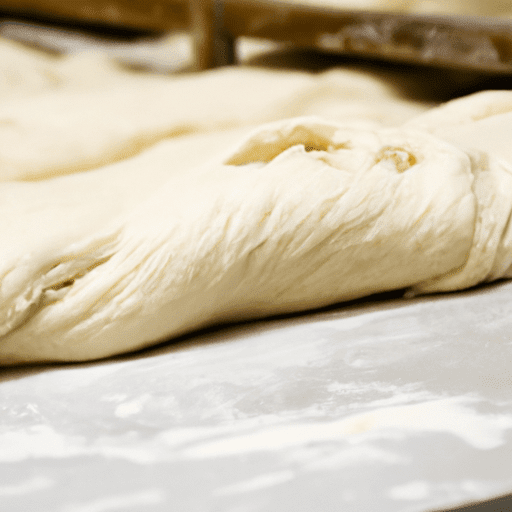Bread Stick Dough: A Versatile Delight
If you’re a lover of freshly baked bread, then bread stick dough should definitely be on your culinary radar. With its crispy exterior and delightfully chewy center, bread sticks are a beloved addition to any meal. Whether you’re dipping them into marinara sauce, enjoying them alongside a salad, or simply snacking on their own, bread sticks have earned their rightful place in the realm of deliciousness. In this post, we’ll dive into the wonders of bread stick dough, exploring its taste, common uses in cooking, nutritional value, and even a few interesting historical tidbits.
Taste and Texture for the Perfect Crunch
The taste of bread stick dough is a testament to the simplicity of its ingredients: just flour, water, yeast, salt, and a touch of olive oil. Once baked, the resulting bread sticks have a subtly salty flavor that pairs well with a multitude of dishes. Their golden crust yields a satisfying crunch, while the interior crumb remains delightfully soft and chewy. It’s the perfect combination of texture and taste that keeps us coming back for more.
Versatile in the Kitchen
Beyond being a delightful snack on their own, bread sticks are incredibly versatile in the kitchen. They can be enjoyed as an appetizer, served with a variety of dips like marinara, hummus, or tzatziki. Bread sticks can also be paired with soups and stews to add a hearty element to your meal. Crumbled and used as a topping, they can even add a flavorful twist to salads and pasta dishes. The possibilities are endless, limited only by your imagination.
Nutritional Value
While bread sticks may not be the epitome of a health food, they do offer some nutritional benefits. These treats are a good source of carbohydrates, providing energy to fuel your day. They also contain small amounts of protein and fiber. However, it’s always a good idea to enjoy them in moderation, as they can be high in sodium and calories.
History and Fun Facts
Like many beloved foods, the origins of bread sticks can be traced back to ancient times. It is believed that the ancient Egyptians were the first to adopt the practice of baking thin, rod-shaped bread. These early bread sticks were often left as offerings to their gods. Over time, bread sticks gained popularity throughout the Mediterranean region, with variations popping up in different countries. Today, they can be found in various forms and flavors around the world.
Fun fact: In Italy, bread sticks are known as “grissini,” and they have become a staple in Italian cuisine. Legend has it that bread sticks were first created in the city of Turin in the 17th century. Bread dough was intentionally overcooked to make it crisp and dry, ensuring a longer shelf life. It didn’t take long for these crunchy delights to capture the hearts and taste buds of Italians, and they quickly spread throughout the country.
Conclusion
Whether enjoyed as a standalone snack, a delicious accompaniment to a meal, or a creative ingredient in your favorite dishes, bread stick dough brings joy to any table. With its simple yet delightful taste and its versatile nature, it’s no wonder that bread sticks have stood the test of time. So, why not try your hand at making homemade bread stick dough? They’re sure to impress your guests and make your taste buds dance with delight.
Origin and History:
- Breadsticks, also known as grissini, originated in Italy in the 14th century. They were initially developed as a way to test the consistency of bread dough before baking.
- It is believed that the first breadsticks were created in Turin, Italy, by a baker named Antonio Brunero.
- Over time, breadsticks gained popularity and became a staple in Italian cuisine. They started appearing as a complementary item to meals in Italian restaurants.
Common Uses:
- Breadstick dough is typically shaped into long, thin, and rod-like sticks before baking.
- Breadstick dough is often baked until crisp, resulting in a crunchy texture that people enjoy as a snack or accompanying dip, like marinara sauce or hummus.
- They can be flavored with various ingredients such as garlic, herbs, or even cheese to add extra taste and dimension.
Nutritional Benefits:
- Breadstick dough is primarily made from flour, water, yeast, and salt. It primarily contributes carbohydrates to the diet.
- The enriched flour used in breadstick dough often contains essential nutrients such as iron and B vitamins.
- The nutritional profile of breadstick dough will vary depending on the specific recipe or brand used.
Unique Properties:
- The long and thin shape of the breadstick dough allows for a more even baking process, resulting in crispy sticks.
- Breadstick dough has a low moisture content, which contributes to its long shelf life.
It’s worth noting that while breadstick dough itself may not be overly nutritious, its enjoyment can be balanced with a healthy overall diet.




Use the share button below if you liked it.
It makes me smile, when I see it.